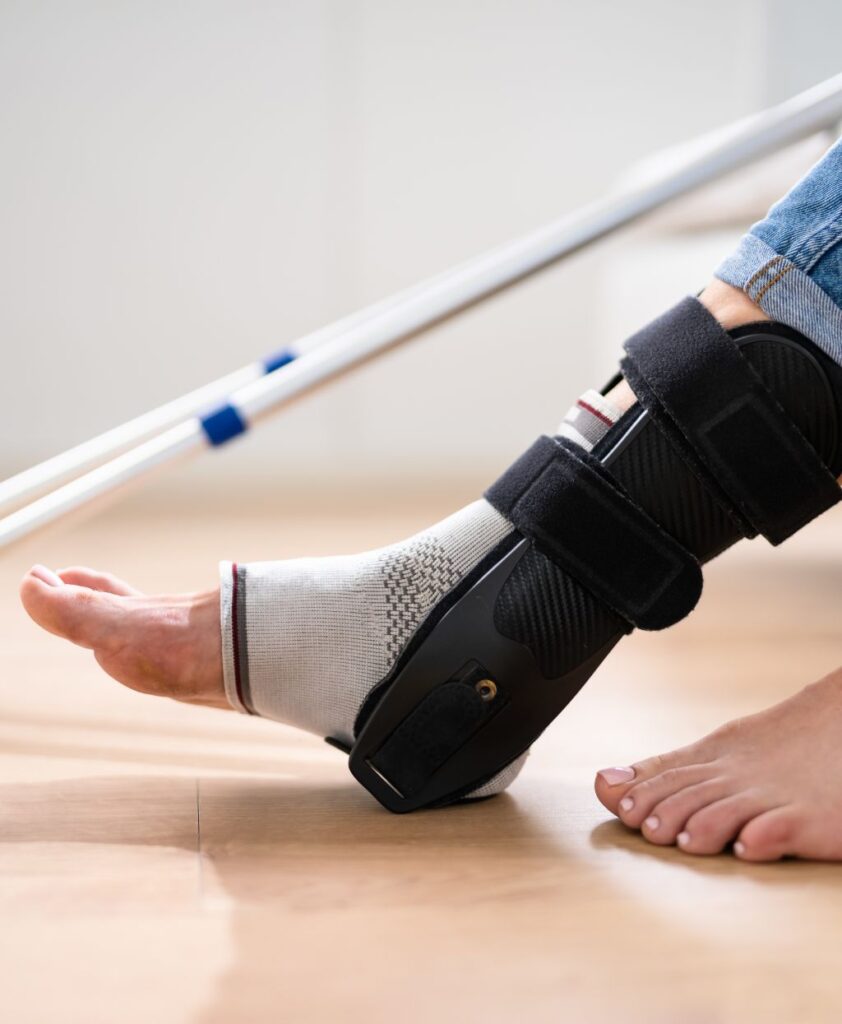Ankle surgery helps repair damaged bones, ligaments, or tendons to restore stability and movement. It relieves pain, improves function, and supports long-term mobility after injury or chronic ankle conditions.

Ankle surgery helps repair damaged bones, ligaments, or tendons to restore stability and movement. It relieves pain, improves function, and supports long-term mobility after injury or chronic ankle conditions.
Dynasty Clinic provides expert Ankle Surgery to treat conditions like fractures, ligament injuries, and deformities. The procedure is designed to restore function, alleviate pain, and improve mobility. Our skilled surgeons offer personalized care, ensuring a smooth recovery process and helping you regain strength and comfort. Whether you’re recovering from an injury or seeking long-term ankle health improvement, our Ankle Surgery services deliver effective and lasting results.
Ankle surgery is a medical procedure performed to treat injuries, deformities, or chronic conditions affecting the ankle joint. It may involve repairing torn ligaments, fixing fractures, removing damaged tissue, or replacing part or all of the joint. The goal is to relieve pain, restore stability, improve movement, and help patients return to normal activities.
Ankle Surgery begins with a thorough evaluation and imaging to assess the extent of damage. During the procedure, the surgeon repairs or replaces the affected tissues, bones, or ligaments. The process ensures alignment, stability, and function are restored to the ankle joint. After surgery, patients receive personalized rehabilitation plans to promote healing and restore mobility efficiently.

Ankle Surgery is ideal for patients who want to restore their mobility and live pain-free. If you’ve experienced an injury, chronic pain, or reduced movement, our orthopedic specialists will evaluate your condition and discuss the most suitable surgical options. We’ll design a personalized treatment plan to ensure safe recovery and long-term results, helping you walk and move comfortably again.
Ankle surgery can offer significant benefits for people suffering from ankle instability, pain, or limited mobility caused by various injuries. Here’s a breakdown of some key advantages:
Patients should avoid ankle surgery if they have uncontrolled diabetes, active infections, or severe circulation issues. Pregnant individuals or those with heart complications should consult their physician before considering the procedure. A detailed medical evaluation at Dynasty Clinic ensures that only suitable candidates undergo surgery safely.
After surgery, patients can expect improved mobility, reduced pain, and better ankle stability. The procedure enhances balance, restores proper walking posture, and prevents future injuries. With physical therapy and follow-up care, long-term results are highly successful and sustainable.
Ankle Surgery typically lasts between one to three hours, depending on the complexity of the case. Minor procedures may take less time, while reconstructive surgeries can take longer.
Recovery time varies from four to twelve weeks, depending on the patient’s condition and procedure type. Most patients can resume light activities within weeks, with full recovery achieved through guided rehabilitation and physiotherapy.
Our team of skilled orthopedic surgeons specializes in performing precise and effective ankle surgeries. By combining advanced surgical techniques with modern medical technology and targeted physiotherapy, we ensure optimal results and safe recovery for every patient. Our dedication to personalized care, post-surgical support, and patient satisfaction makes us a trusted choice for ankle surgery.
For more information or to schedule your consultation, contact Dynasty Clinic today. Restore your mobility and regain your active lifestyle with our expert care, proven surgical excellence, and guided physiotherapy.

More than 250 five-star reviews on Google
Trustindex verifies that the original source of the review is Google. Best clinic in DubaiPosted onTrustindex verifies that the original source of the review is Google. Highly recommend ❤️❤️amazing clinic and staffPosted onTrustindex verifies that the original source of the review is Google. The staff is very professional and the doctors are excellent. Not commercial.Posted onTrustindex verifies that the original source of the review is Google. Best clinic in Dubai, I felt well taken care of from first step Highly recommended 👌Posted onTrustindex verifies that the original source of the review is Google. Amazing clinic with professional caring team Clean , modern and very organized highly recommended ♥️Posted onTrustindex verifies that the original source of the review is Google. دكتوره سيما وايد شاطره وأيدها خفيفه 💖💖💖💖💖💖💖Posted onTrustindex verifies that the original source of the review is Google. Dr. Seema is truly exceptional in her field. Anatomically, she has this remarkable ability to pinpoint exactly where to go and what steps to take, guiding anyone through the intricacies of the human body with ease. When it comes to skin, she can describe not just the surface but the dimensions and texture in a way that makes everything clear. Her depth of understanding and the sheer amount of knowledge she brings to the table really make her a pioneer in her specialty.
Ankle surgery usually takes one to three hours, depending on the complexity of the condition. Your surgeon will explain the process and duration in advance, ensuring you understand every step before the procedure begins.
You’ll be under anesthesia during the surgery, so there’s no pain during the procedure. Some mild soreness or swelling can occur afterward, but pain is well-managed through prescribed medication and proper aftercare.
Recovery typically takes six to twelve weeks, based on your body’s healing response and surgery type. Following your rehabilitation plan and attending follow-up visits help ensure a smooth and faster recovery.
You may start walking with crutches or a walker after a few weeks, depending on healing progress. Full weight-bearing usually resumes after approval from your surgeon, supported by physiotherapy sessions for stability.